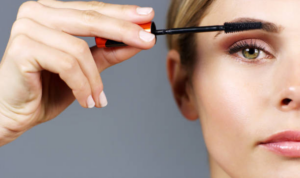Peeling skin on the hands can be both unsightly and uncomfortable, causing distress and irritation in daily life. The key to addressing this issue swiftly is to understand the underlying causes, immediately implement effective home remedies, and take preventive measures to protect your skin’s health. Luckily, there are several steps you can take to heal your hands and restore their smoothness quickly, ranging from soothing treatments to lifestyle adjustments.
Understanding Peeling Skin on Hands
When dealing with peeling skin on your hands, it’s vital to identify the common culprits behind this condition. Various factors can contribute to this problem:
- Environmental influences such as extreme weather conditions or prolonged sun exposure.
- Frequent handwashing or use of harsh soaps and sanitizers that strip the skin’s natural oils.
- Underlying skin conditions, including eczema, psoriasis, or allergic reactions.
- Nutritional deficiencies that impact skin health, particularly lack of vitamins A, C, and E.
Once you’ve pinpointed a potential cause, you can tailor your approach to healing and prevention. However, it’s important to recognize the symptoms that may necessitate medical attention, such as excessive redness, bleeding, or signs of infection. In such cases, consulting with a healthcare professional is crucial.

Immediate Remedies for Peeling Skin
There are several home treatments you can use to relieve peeling skin on your hands effectively:
- Use a gentle, fragrance-free cleanser to prevent further irritation.
- Apply a thick, emollient moisturizer immediately after washing your hands to lock in hydration.
- Soak your hands in warm (not hot) water mixed with baking soda or oatmeal to soothe the skin.
- Protect your hands with cotton gloves after moisturizing, especially overnight.
In addition to these treatments, over-the-counter products can also provide relief. Look for creams with ingredients such as:
- Urea or lactic acid, which can help exfoliate dead skin gently.
- Hyaluronic acid, which boosts the skin’s moisture-retaining capabilities.
- Ceramides, which support the skin’s barrier function and retain moisture.
| Ingredient | Benefits |
|---|---|
| Urea/Lactic Acid | Gently exfoliates dead skin and improves texture |
| Hyaluronic Acid | Enhances hydration and plumps the skin |
| Ceramides | Strengthens the skin’s barrier and locks in moisture |
Long-term Strategies for Healthy Skin
While quick fixes can alleviate immediate discomfort, they won’t prevent future issues unless paired with long-term strategies that promote overall skin health. Two critical factors to consider are nutrition and lifestyle choices.
In terms of nutrition, aim to include foods rich in omega-3 fatty acids, antioxidants, and vitamins A, C, and E in your diet:
- Omega-3 fatty acids, found in fish like salmon, can help reduce skin dryness.
- Antioxidant-rich berries, nuts, and green leafy vegetables can protect your skin from environmental damage.
- Vitamins A, C, and E, present in fruits and vegetables like carrots and oranges, support skin repair and collagen production.
It’s also essential to stay well-hydrated. Drinking an adequate amount of water throughout the day is a simple yet crucial step in maintaining your skin’s elasticity and preventing dryness.
Lifestyle choices play an equally important role in safeguarding the health of your skin. Stress management, regular exercise, and adequate sleep can all significantly impact skin condition. Engaging in stress-reducing activities like yoga or meditation can improve your overall well-being, reflecting positively on your skin. Exercise increases blood circulation, which nourishes skin cells and promotes the removal of toxins. A consistent sleep schedule allows your skin to repair and regenerate, reducing the likelihood of peeling and other skin issues.

Preventive Measures to Avoid Peeling Skin
To head off future episodes of peeling skin on your hands, preventive measures are your best defense. The following steps can serve as your daily protective routine:
- Always wear gloves while doing household chores, particularly when using cleaning agents or gardening, to protect your skin from irritants and physical damage.
- When outdoors in cold weather or strong sunlight, shield your hands with appropriate gloves to prevent weather-related skin damage.
Incorporating a dedicated skincare routine into your everyday life is also crucial. Remember to:
- Moisturize your hands several times a day, especially after washing them.
- Use broad-spectrum sunscreen on your hands to protect against UV damage.
- Exfoliate gently once a week to remove dead skin cells and promote cell turnover.
When and How to Consult Dermatologists
Recognizing when to reach out to a dermatologist is essential for managing persistent or severe skin issues. If you observe symptoms such as intense itching, pain, widespread rashes, or signs of infection (like pus or significant swelling), professional advice is recommended. Similarly, if your skin doesn’t respond to home treatment within a couple of weeks, a dermatologist can provide a thorough assessment and personalized care plan.
During your visit, you can expect a dermatologist to:
- Conduct a detailed examination of your skin.
- Inquire about your medical history, symptoms, and any products you’re using.
- Perform tests if needed (such as allergy tests).
- Recommend a custom treatment plan, which may involve prescription medication or therapy.

Conclusion
Peeling skin on your hands can be a frustrating issue to deal with, but by employing immediate remedies, adopting long-term healthy skin strategies, and taking preventive measures, you can quickly restore your hands to comfort and smoothness. While home treatments are often effective, don’t hesitate to consult a dermatologist for unresponsive or severe cases.
FAQs
1. What home remedies can I use for peeling skin on my hands?
Home remedies include moisturizing frequently with a thick cream, soaking your hands in a mixture of warm water and oatmeal, and applying natural oils like coconut or avocado oil to soothe and hydrate the skin.
2. How often should I moisturize if my hands are peeling?
It’s recommended to moisturize your hands every time you wash them and before bedtime. For extremely dry or peeling skin, you may need to moisturize several times throughout the day.
3. Can a change in diet help with peeling skin?
Yes, a diet rich in omega-3 fatty acids, antioxidants, and vitamins known to support skin health can help improve skin condition. Incorporate foods like fish, nuts, berries, and colorful vegetables to provide essential nutrients for skin repair.
4. When is it necessary to consult a dermatologist about peeling skin?
Consult a dermatologist if your skin doesn’t improve after two weeks of home care, if symptoms worsen, or if you experience severe pain, itching, signs of infection, or widespread rashes.
5. How can I prevent my hands from peeling in the future?
Preventive measures include protecting your hands from harsh chemicals and environmental factors, using a gentle cleanser, moisturizing regularly, and applying sunscreen on your hands when going outdoors. It’s also helpful to maintain a healthy diet and stay hydrated.



